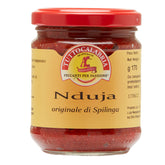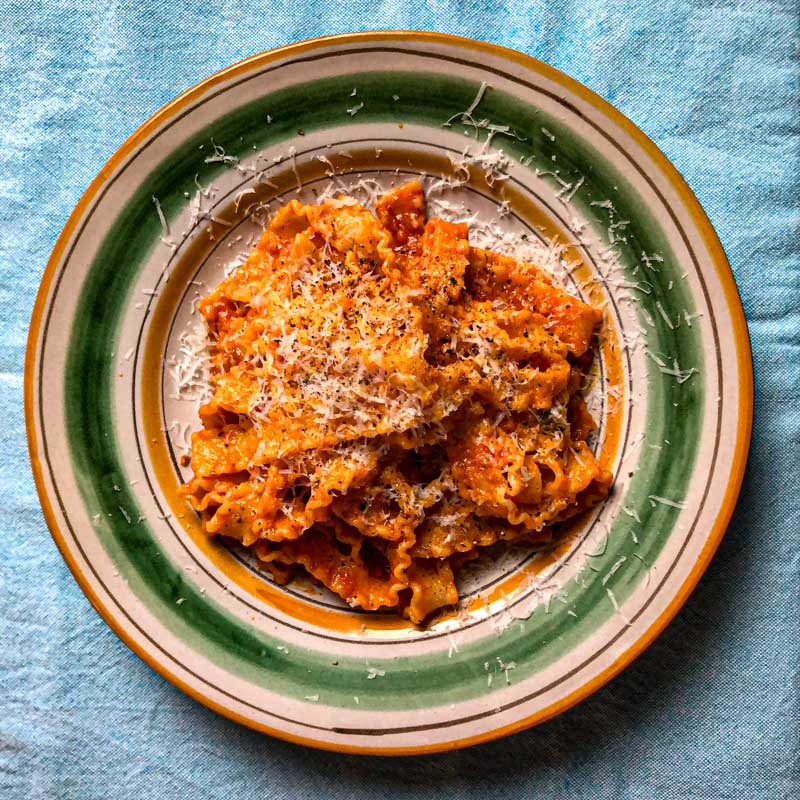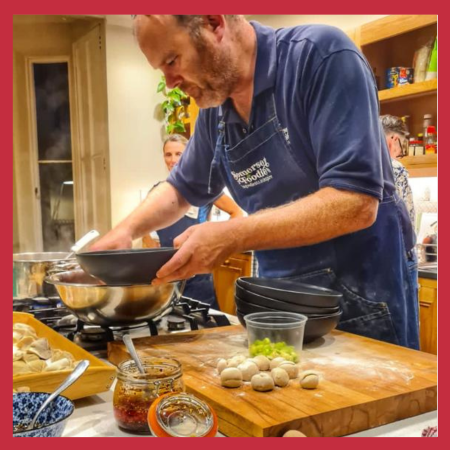Calabrian Nduja Pasta with San Marzano Tomatoes and Pecorino
On a road trip around Calabria we ate one of the most delicious plates of pasta we've had in a long time, epitomising the essence of Italian cooking - top quality ingredients, simply prepared. The dish was made using locally grown tomatoes, spicy nduja salami and home-made pasta, topped with a generous grating of sharp, salty pecorino cheese. It was served in a small cafe in the rustic hilltop town of Bova and is one of the popular ways to use Nduja - the soft, spreadable salami spiked with lots of hot peperoncini.
The Calabrians love their chillies, the bright red peppers are slowly dried in the sun to intensify their sweetness. You can eat Nduja without the need for cooking, just like any other salami and it's often served alongside antipasti as a condiment. In this recipe I've cooked the nduja with some gloriously sweet San Marzano tomatoes to try and recreate those bold flavours. The pasta I've used here is not the same shape as the original dish, but our Portoghese Mafaldine pasta works really well. Pecorino is the perfect choice for the cheese topping, the salty, slightly sharp flavour of the sheep's cheese contrasts perfectly with the sweet tomatoes and rich nduja.
PREP TIME: 5 mins | COOKING TIME: 20 mins
Ingredients for Calabrian Nduja Pasta with San Marzano Tomatoes Recipe
Serves 2
3 tablespoons extra virgin olive oil, plus a little extra for drizzling
2 cloves of garlic, peeled and thickly sliced into 3 or 4 pieces
400g Attianese San Marzano Plum Tomatoes, hand crushed
60g Tutto Calabria Nduja or Madeo Nduja Calabrese
175g Portoghese Mafaldine Pasta
Plenty of grated Argiolas Pecorino Romano
Sea salt
1. BRING A LARGE POT OF WATER TO THE BOIL
Fill a large saucepan with around 2 litres of water plus a tablespoon and salt and bring to the boil.
2. INFUSE THE OIL AND GARLIC
Meanwhile, in a highsided frying pan, gently heat the olive oil and fry the garlic cloves until they begin to lightly brown, around 2 minutes.
3. PREPARE THE SAN MARZANO TOMATOES
Whilst the garlic is cooking, tip the San Marzano tomatoes into a bowl and using clean hands, crush them into a rough pulp.
4. COOK THE TOMATOES
Tip the tomatoes into the pan with the garlic then fill the empty tomato can with roughly a third of it's volume of water and tip that in as well. Bring the tomatoes up to a simmer and cook for around 5 minutes.
5. START COOKING THE PASTA
Ensure the water is boiling, then drop the pasta into the salty water. Give it a swirl around to ensure it's all submerged and bring back to the boil as fast as possible. Once it's boiling, turn the heat down a little and cook for around 8 minutes (or until it's al dente).
6. ADD THE NDUJA TO THE SAUCE
Once the tomatoes have been cooking for around 5 minutes, add in the nduja, in small chunks. Keep cooking and stirring so the nduja melts into the sauce. Continue to cook for a further 5 minutes or until the sauce reduces and thickens up.
7. COMBINE THE PASTA AND THE SAUCE
Once the pasta is al dente, remove from the water using a pair of tongs and dump it straight into the sauce, some of the pasta cooking water will end up in the sauce as well. Turning the heat down to low, stir the pasta into the sauce, coating the pasta really. Continue to cook for another minute on the gentle heat, stirring all the time - this will finish cooking the pasta and ensure sauce has coated everything perfectly. If it looks a little dry, add a spoonful or two of the pasta cooking water.
8. PLATE UP
All that's left now is to divide the pasta between two plate, generously grate with pecorino cheese and a drizzle of extra virgin olive oil......yum.










